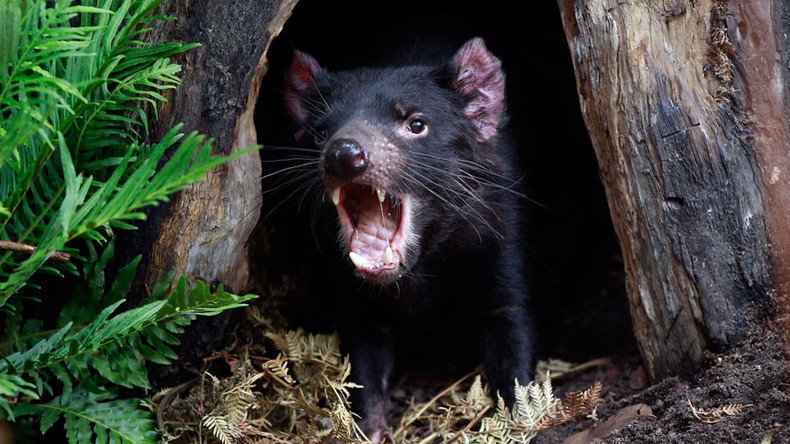Devil's cousin: Carnivore capable of 'slicing up' animals 5mn yrs ago identified in Australia

Researchers have identified a distant relative of the Tasmanian devil, Australia’s largest living flesh-eating marsupial. The Whollydooleya tomnpatrichorum was the carnivore's “cousin,” with teeth capable of “slicing up the largest animals” five million years ago.
In contrast to the Tasmanian devil, which is the size of a small dog, the now-extinct beast is thought to have weighed approximately 25 kilograms (55lb).
“W. tomnpatrichorum had very powerful teeth capable of killing and slicing up the largest animals of its day,” the study's lead author, Professor Mike Archer of the University of New South Wales (UNSW), said in a press release.
Scientists said the Whollydooleya is the first creature to be formally identified from a range of “strange new animals” whose remains were unearthed at a fossil site dubbed 'New Riversleigh' in Queensland. Researchers embarked on the site in 2013, just one year after it was discovered.
“New Riversleigh is producing the remains of a bevy of strange new small- to medium-sized creatures, with Whollydooleya tomnpatrichorum the first one to be described,” Professor Archer said.
“These new discoveries are starting to fill in a large hole in our understanding about how Australia’s land animals transformed from being small denizens of its ancient wet forests to huge survivors on the second most arid continent on Earth,” he added.
“Although Whollydooleya terrorized the drying forests around 5 million years ago, its own days were numbered,” said Archer.
“While it was at least distantly related to living and recently living carnivorous marsupials such as Devils, Thylacines and Quolls, it appears to have represented a distinctive subgroup of hypercarnivores that did not survive into the modern world," he said, adding that "climate change can be a merciless eliminator of the mightiest of mammals."
Australia began to dry out during the late Miocene period, between about 12 and five million years ago. Scientists say it's one of the "most mysterious and least understood" periods in the continent’s past. Early relatives of present-day animals, like kangaroos, koalas, crocodiles and lizards, began to evolve, and some of the large marsupials developed trunks. However, due to increasing aridity, fossils of land animals from this period are very rare.
Dr. Karen Black, a UNSW postdoctoral researcher in paleontology, said the small- to medium-size mammals from the New Riversleigh deposits "will reveal a great deal about how Australia’s inland environments and animals changed between 12 and 5 million years ago – a critical time when increasing dryness ultimately led to the Ice Ages of the Pleistocene.”













